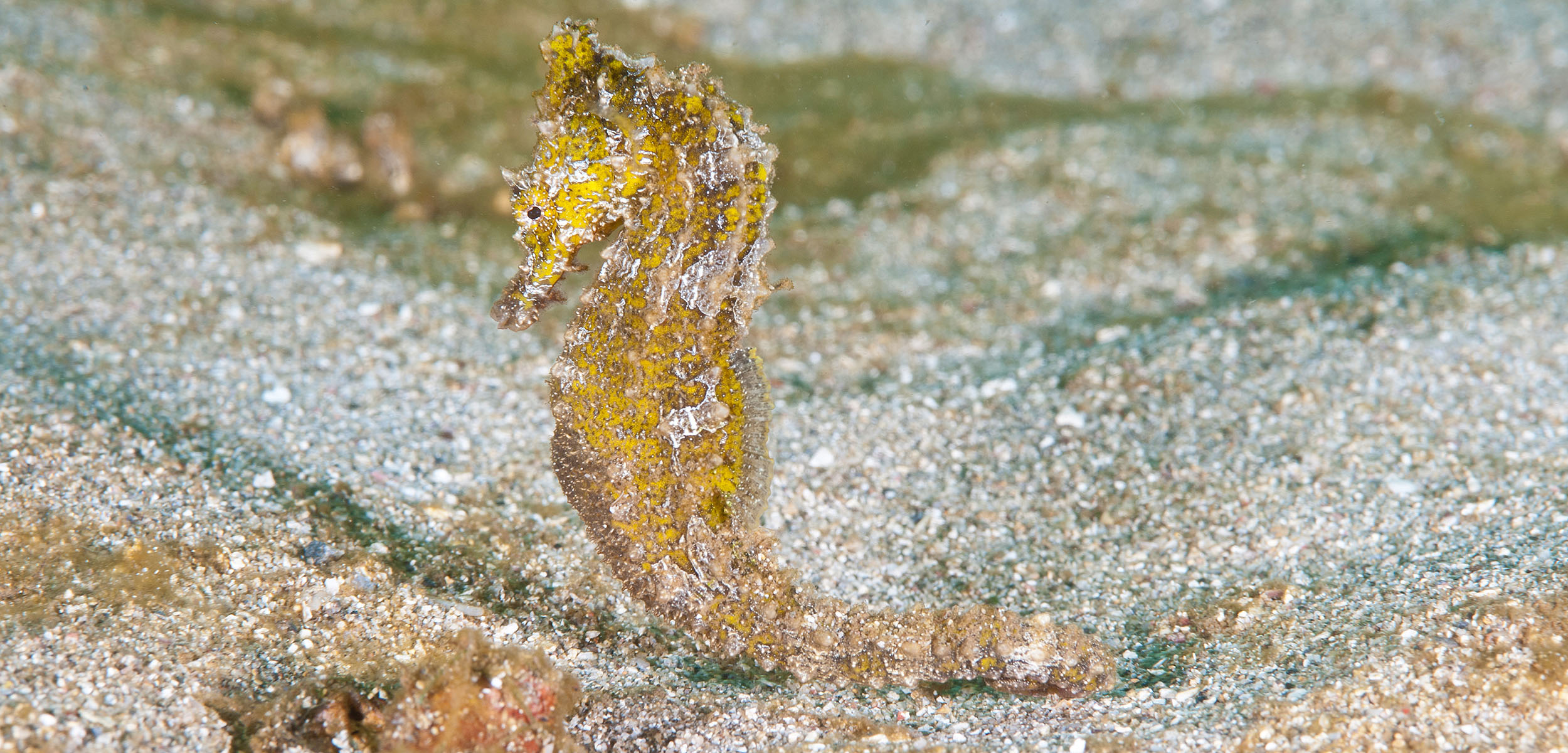In Brazil, the Seahorse Black Market Is Bustling
Every year, the country’s fishers accidentally catch millions of seahorses. Where they all go, nobody quite knows.
Article body copy
From São Paulo to Macaé, Brazil’s southern coast is flush with fishing vessels. As many as 3,700 bottom trawlers ply the region in search of fish and shrimp. All too often, however, hidden away at the bottom of bulging nets, fishers find Patagonian seahorses, a protected species that lives almost nowhere else.
Researchers have long suspected that southern Brazil is a hotbed for seahorse bycatch, and in a new study, scientists calculate the full size of the problem.
Led by Rosana Silveira, a seahorse researcher with Brazil’s nongovernmental Hippocampus Institute, scientists monitored the catches from five fishing boats between 2016 and 2018. On average, each of these boats pulled up six seahorses every day.
Six seahorses a day doesn’t sound like much, says Sarah Foster, a seahorse expert at the University of British Columbia who wasn’t involved in the study. But extrapolating from five boats to the thousands that make up Brazil’s fleet, she says, yields a much more striking toll—roughly 2.3 million seahorses every year. Fishers are then selling these incidentally caught seahorses, which are sometimes injured or dead, on the black market.
The vast majority of the global seahorse trade winds up dried and used for traditional Chinese medicine, says Foster, and a fraction goes to the aquarium trade. The Brazilian bycatch, however, mostly stays in the country, Silveira says. There, it feeds a clandestine market for curios, folk remedies, and talismans used in Afro-Brazilian religions.
But Brazil’s estimated take of 2.3 million seahorses makes the country a major seahorse supplier, says Silveira. It’s not too far behind the countries with the highest catch rates: Thailand with 29 million, Vietnam with 16.7 million, and India with 14 million.
Brazil’s market for seahorses is nothing new. Before the government protected seahorses in 2014, the fish were easily found in local markets. “Everyone openly sold dried seahorses that were displayed in bowls or hung in plastic bags,” Silveira says. Since protections went into effect in 2014, though, sales have become more covert. The animals are no longer on display. But if you insist to a market vendor that you need a dried seahorse treatment, “the fish will appear,” Silveira adds.
Silveira can’t say much about how these seahorses are moving around Brazil—researchers may attempt to map trade routes in a future study. Given the sheer number of seahorses being caught, Silveira says the black market is likely much larger and more secretive than she thought.
The bycatch problem is a threat to Brazil’s seahorses. And to really fix the situation, Foster says conservation efforts should focus on curtailing bottom trawling rather than cracking down on illegal trade.
“Even if the seahorses weren’t being consumed, they would still be getting caught in fishing gear and dying,” Foster says. “Anywhere there are seahorses and there is bottom trawling, there’s a problem.”

